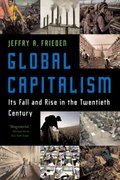Question 1: Consider the DAD-DAS framework: IS Curve: Y, = l7 or, + 630 Aggregate Supply (AS): 7r: = 71f + (MY; 17) + a? Taylor Rule: it = 71', + grifn 71"\") + Y(Yt 17) Fisher Equation: it = n + a5 +1 Variable / Parameter Description Y; Output at time t 17' Natural level of output Real interest rate Demand shock Rate of ination at time t Expected ination for time t Supply shock Nominal interest rate Ination target (constant over time) Monetary policy parameter, positive Monetary policy parameter, positive The variables are described in the table above. The shock terms a,\" and sf, are stochastic and uncorrelated, with expected value of zero. The parameter a > 0 is a positive constant. (a) Assume that expectations are adaptive, e.g. 7r: = 7r,_1, and assume that 7r* = 0. Find the equilibrium values for the level of output and ination in this economy at time t. Assuming no shocks in equilibrium, explain the eects on the equilibrium of a decrease in ()5... (Answer space: max 2 pages) IE (b) Suppose that at time t 1 ination is zero and there were no shocks in the economy. At time t there is a contractionary supply shock (6'? > 0) that lasts for only two periods. Using a graph to illustrate your answer, explain the eect of such a shock on the equilibrium of the DAD-DAS model. (Answer space: max 1 page) (c) Now suppose that expectations are rational. Assume again that 1r: = 0 and assume that in equilibrium 71f\" = sf. Find the equilibrium level of output and ination at time t. Comment on your ndings and compare the main differences with case (a). (Answer space: max 1 page) Page 2 (d) Consider the same shock as in (b). Explain, using a graph, the effects of such a shock on the equilibrium of the DAD-DAS model with rational expectations. Compare your results with case (b). How would you comment on the ability of monetary policy to contrast such a negative shock? (Answer space: max 1 page) Question 2: Consider a policy maker who wants to minimize the loss function L(u, 7r) = u + 7W2, where 1:. denotes unemployment, 7r denotes the ination rate and 'y > 0 is some constant. Suppose that the Phillips curve describes the relationship between unemployment and ination, u: u\" a(7r7re), where u\" is the natural rate of unemployment, are are the ination expectations and or > U is some constant. Suppose the central bank can directly choose the ination rate. (a) (d) Assume that agents have rational expectations. Which ination rate would the central bank choose under discretionary policy (without an announcement)? What would be the resulting unemployment? What the value of the loss function? (Answer space: max 1 page) Now suppose the central bank announces beforehand that ination will be zero. Assume that agents believe this announcement and that the central bank follows what it announced. What would be the resulting unemployment? What the value of the loss function? Compare with the results you obtained in (a) and explain. (Answer space: max 1 page) Consider the same announcement of zero ination. Assume that agents believe this announcement. However, now the central bank does not stick to the announcement and sets ination to minimize the loss. What would be the resulting unemployment? What the value of the loss function? Explain the differences to part (b). What do these results imply for the credibility of the original announcement? (Answer space: max 1 page) Now assume that agents have rational expectations. Otherwise consider the same announcement of zero ination and a central bank that sets ination to minimize the loss. Which ination rate does it choose? What is unemployment in this case? What the value of the loss function? Compare with the results you obtained in parts (a)-(c) and explain. (Amwer space: max 1 page) Page 3








